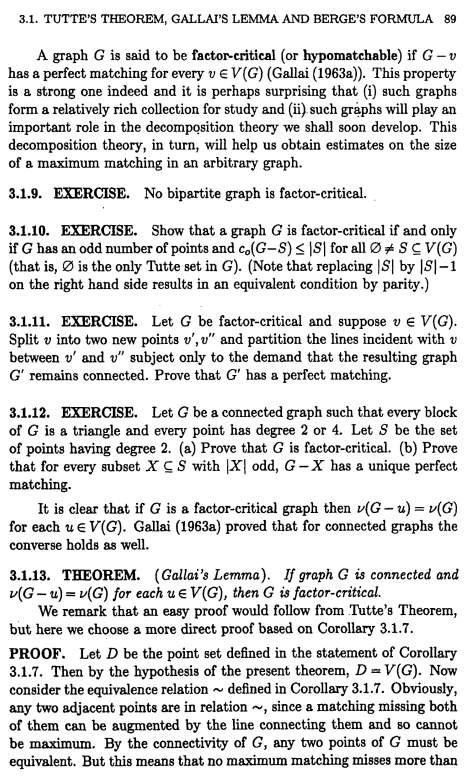I have seen a proof of Tutte's theorem from Gallai's lemma. Lovasz also said in his Matching Theory that Gallai's lemma can be easily proven from Tutte's theorem. But I cannot figure out how.

3.1.13. THEOREM. (Gallai's Lemma). If graph $G$ is connected and $\nu(G-u)=\nu(G)$ for each $u \in V(G)$, then $G$ is factor-critical.
We remark that an easy proof would follow from Tutte's Theorem, but here we choose a more direct proof based on Corollary 3.1.7.
Thanks!
